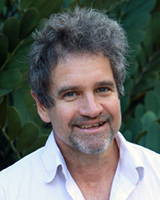Early Abstract:
Objective: The James Cook University (JCU) medical school has a mission to produce graduates committed and competent to practise in local regional, rural and remote areas. As positive rural placement experiences are known to enhance interest in a rural career and generalist medicine, this study explores key factors contributing to JCU medical students having a ‘high quality’ rural clinical learning experience during their final-year rural placement.
Methods: Sequential, explanatory mixed-methods design, with 4 focus groups (n=17) and a one-on-one interview followed by a cross-sectional survey (n=71; response rate=45%) of final-year JCU medical students in 2023. The main outcome variable for the survey was a Visual Analogue Scale (VAS) question asking students to rate the clinical learning environment on their rural placement, while an open-ended question asked if and how clinical learning received on placement differed depending upon the background training of their supervising Doctor. The focus groups asked students to identify on a circle diagram all key components which impacted on having a good or bad clinical learning experience on their placement and then explain individually and then discuss as a group the contexts around each component.
Results: Overall, 46% of students completing the survey reported their rural placement was of high clinical learning value (≥85/100 on a VAS). Quantitative analysis identified ‘high value’ clinical learning placements were predicted by students’: spending >50% of their placement learning in Emergency Departments (ED) (p=0.005; Prevalence Odds Ratio (POR) = 9.4); ‘very high’ confidence in knowing how to manage the common presentations of North Queensland (NQ) patients (p=0.006; POR = 8.5); and, being placed in small towns >100 kilometres away from the populated NQ coast. Student focus group participants consistently reported they received the best teaching from local doctors who were more permanently based in that community, had significant experience in rural medicine, and were familiar with their competency level as a 6th year student and their learning objectives on rural placement. Overall, the key areas impacting student’s clinical learning on rural placement can be summarised under: ‘provided quality teaching/supervision’, ‘allowed appropriate levels of autonomy’, ‘appropriate clinical variety and workload'; and ‘student factors’.
Conclusions: The study findings suggest the key to JCU medical students having ‘high quality’ clinical learning on rural placements is by developing supportive learning relationships with senior permanently-based rural doctors who are willing to teach and know their ‘scope of practice’ and specific placement learning requirements, and experiencing a diverse roster across hospital, GP and outreach clinics but with significant placement time in the ED. Potentially, these findings may assist rural placement programs coordinators to better plan, develop and support training sites and thus improve future placement experiences for student and junior doctor trainees. These improved learning experiences may in turn lead to more positive rural experiences that may further increase trainees’ interest in rural and/or generalist medicine careers.
Keywords: General Practice, learning, medical, placement, rural, student, supervisor, teaching, trainee.


